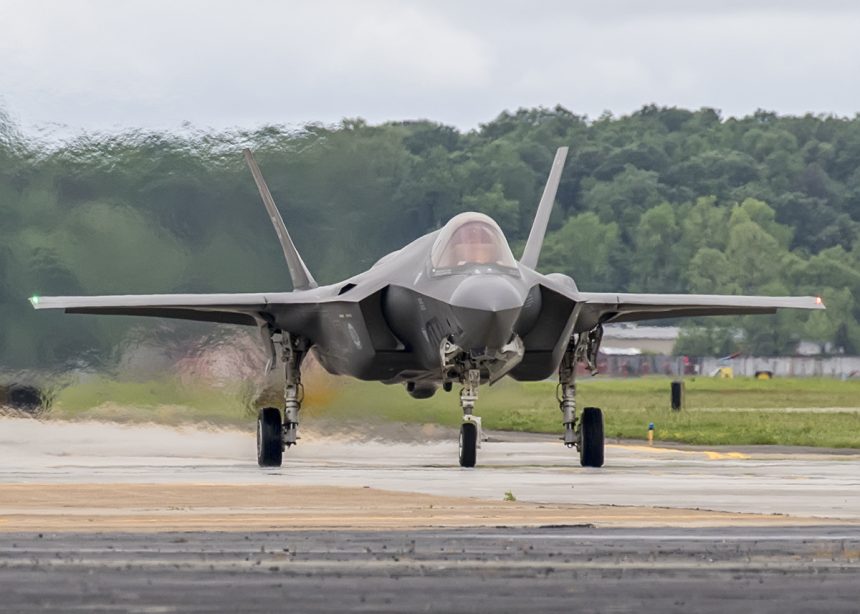Atlantic Trident 17 Drives a Higher Level of Integration.
The exercise held April 12 – 28 at Joint Base Langley-Eustice (JBLE) included a “Blue Air” force of USAF F-22 Raptors of the 1st Fighter Wing (FW) JBLE and F-35 Lightning IIs from Eglin AFB, Typhoons of the Royal Air Force (RAF) and Rafales of the French Air Force/Armée de l’Air (FAF).
The adversaries or “Red Air” included USAF F-15E Strike Eagles of the 391st FS “Bold Tigers” Mountain Home AFB, ID and T-38A Talons of the 71st Fighter Training Squadron (FTS) “Ironmen” based at JBLE. Additional assets included the E-3A Sentry from Tinker AFB, OK and a variety of tankers, including a FAF KC-135 and KC-10 of the 305th Air Mobility Wing (AMW) out of Joint Base McGuire-Dix-Lakehurst, NJ.
Aside from the primary training objectives the exercise also provided the opportunity to commemorate 100 years of aerial combat cooperation between the French and US stemming back to WWI.
From the outside, looking in the lethal capabilities of Blue Air appeared to be overwhelming, with Red Air offering little challenge. However, one must consider that the 71st FTS “Ironmen” fly daily as adversaries against the Raptor and possess pilots with Raptor experience. These factors (along with the sheer numbers of Red Air fielded and their ability to “regenerate” on range) provide Red Air with the best likelihood to exploit any vulnerabilities or errors with Blue Air’s tactics – regardless their impressive platforms.
Towards the end of the exercise The Aviationist sat down with Colonel Pete “Coach” Fesler, 1 FW Commander to discuss the exercise and the evolution of air combat in the context of 5th Gen aircraft.
Fesler noted that Atlantic Trident ’17 took integration beyond historical practice. On a tactical level integration historically involved a serial employment of aircraft (such as a Combat Air Patrol of RAF Typhoons) or geographical deconfliction of aircraft (such as FAF assets attacking ground targets in a designated area). However, as Fesler explained starting with Red Flag 17-1 integration has gone deeper, involving a variety of platforms in the same airspace at the same time. Integration between platforms also considered the various loiter time and weapons load/type for a given platform over a given vulnerability period (vul – the period of time when an aircraft is vulnerable to harm).
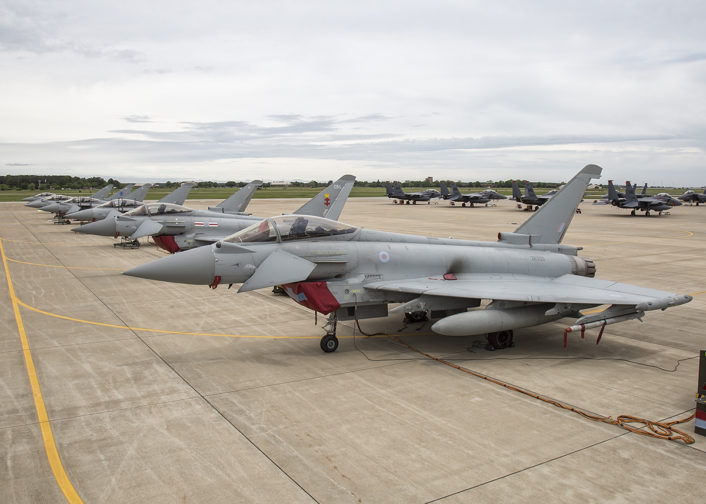
While not being specific, it is not difficult to envision a mixed strike package of Rafales and F-35s, a combat air patrol (CAP) of Typhoons and Raptors (or mix and match on any given mission set). This level of integration leads to big challenges for an adversary who may easily be fixated on attacking a detected Gen 4.5 aircraft, while getting blindsided by a 5th Gen platform or be distracted by a 5th Gen threat “sensed” in the area and get bounced by a very capable Typhoon or Rafale. Hesitation in such air to air combat will most likely be punished with an ending in a ball of flames.
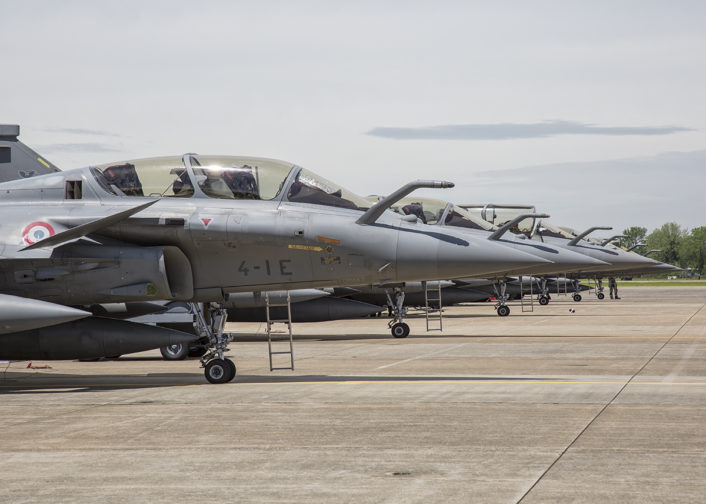
The abundance of information available on the battlefield today drives a much higher level of integration. Fesler noted that multiple people/assets may be involved with the finding, identifying and targeting portion of an air to air encounter. The pilot may take care of the final step and fire the missile that kills the target, but wouldn’t have found their way to that merge unless the assets got them there.
Atlantic Trident ’17 provided an opportunity to demonstrate how the advancement of aircraft, tactics and integration is driving change in the function of the fighter force. For many years, the F-22 Raptor has utilized its superior sensors and SA to take the role of “quarterback” during a vul. Given the integration of the F-35 and with the capabilities of the Typhoon and Rafale, the notion of a “single quarterback” is changing. Frankly, per Fesler, the quarterback notion is starting to become almost a misnomer now in that we have multiple quarterbacks and it’s less about one individual directing everything and more about multiple nodes of information being able to provide the key pieces of information at the right time to influence the fight. It is a foreboding thought for an adversary who now faces a team, where every position has the intelligence/capability of a hall of fame quarterback, even while performing their specific role at the highest level.
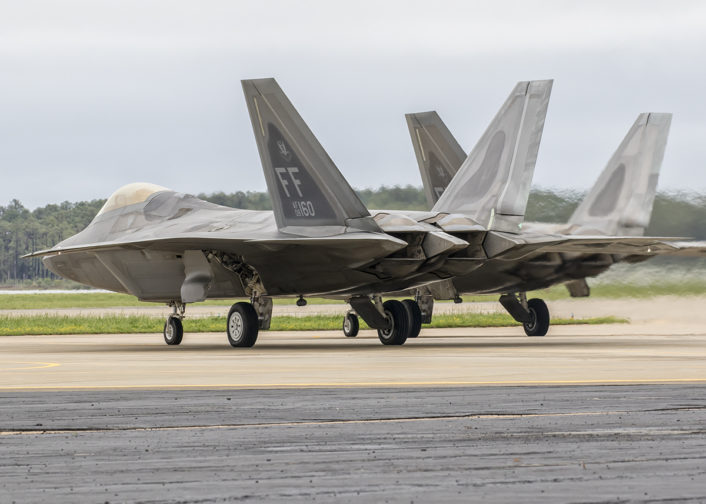
Performing at a high level is one thing, altering the playing field is another. The 5th Gen aircraft has done that very thing, altering the classic air to air engagement in a fundamental way. Fesler noted, the classic approach of shooting ones missiles and turning before the adversary can get a shot is predicated on the fact that the adversary sees you. In the 4th gen world that is the case. Ideally the pilot would like to be able to shoot, let their missile do the work and get away before the adversary can get a missile off. In the 5th Gen world, the adversary doesn’t necessarily know where you are coming from. The 5th Gen pilot may shoot a missile and monitor to make sure it is effective. If the missile misses for any number of reasons, they are in good position for a follow-up shot.
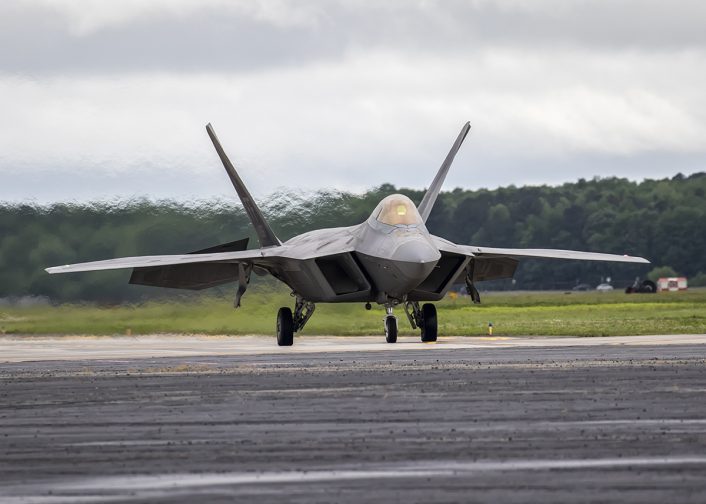
That is one of the fundamental difference between 4th Gen fighters and 5th Gen fighters. In general, in the 5th Gen world the adversary doesn’t really know where you are coming from. They may have a general idea but not a lot of specifics. For 5th Gen pilots it’s a good place to be, to be able to roam around the battlefield faster than the speed of sound in an airplane that is largely undetectable all while your airplane is building a 3 dimensional picture of everything within a couple hundred miles of you. Ouch.
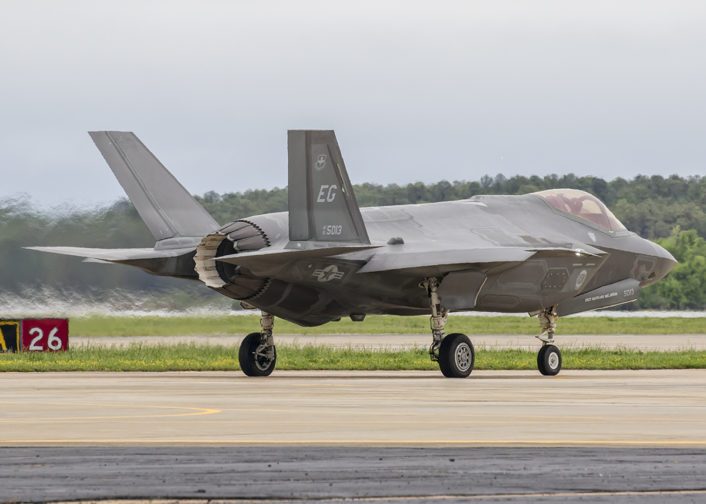
Aside from the exceptional technical aspects that fascinate and draw attention, Felser ultimately notes that his takeaways from Atlantic Trident ‘17 fall back to the human aspect; “fighter pilots are fighter pilots regardless of what their uniforms look like. Aircraft maintainers are aircraft maintainers regardless of what their uniforms look like. There are some universal experiences, beliefs and cultures that transcend the national boundaries in this and that’s one of the things I have enjoyed out of both Tri-lateral exercises (2015 & AT ‘17) that we’ve had. The man in the machine still makes a difference. You can have the most lethal fighter in the world but if you make a mistake a far inferior aircraft can shoot you out of the sky. Training still matters. If that were not the case, we’d buy the machines, park them and never fly them and when war kicked off jump in them and go and fly. That in fact is not the case and you can lose a war with the best equipment if you don’t know how to use it right, if your tactics aren’t sound, if your skills aren’t automatic, you can still lose.”
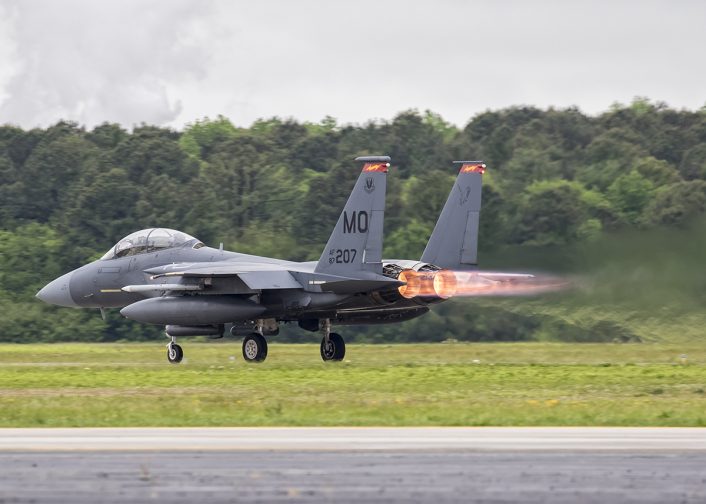
Atlantic Trident ‘17 reveals the way forward; advanced integration, people making a difference, and high level training. This rationale drives the Air Force ensuring it is ready with the highest capability for the next conflict on day 1.
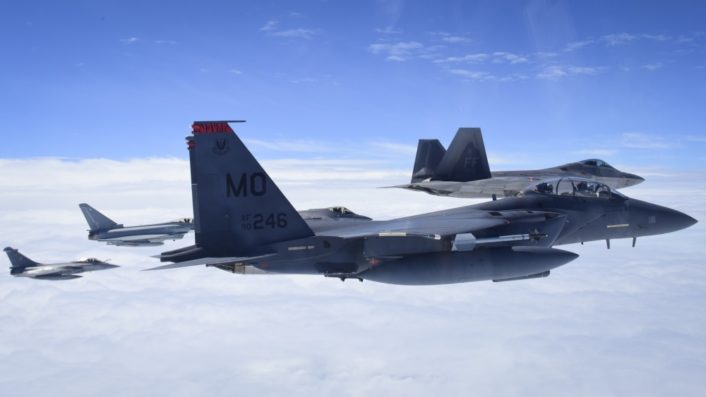
The Aviationist expresses gratitude to Jeffrey Hood 633 ABW PA and the entire 633 ABW Public Affairs Team who were instrumental and exceptional with their support; Col. Pete “Coach” Fesler, 1 Fighter Wing Commanding Officer, and the entire 1 FW; the entire team at Joint Base Langley-Eustis, professional and gracious throughout the visit. You set the bar, our service people are the finest.
Image credit: Todd Miller, unless otherwise stated.

